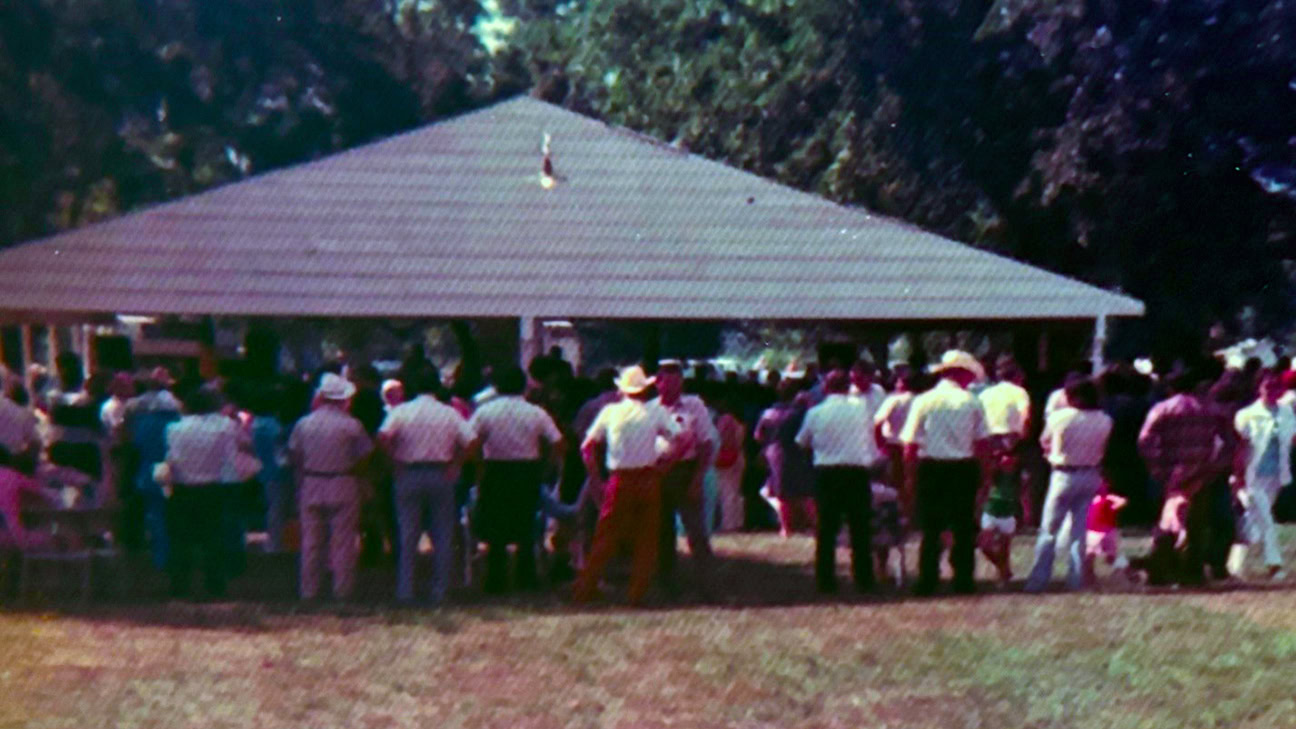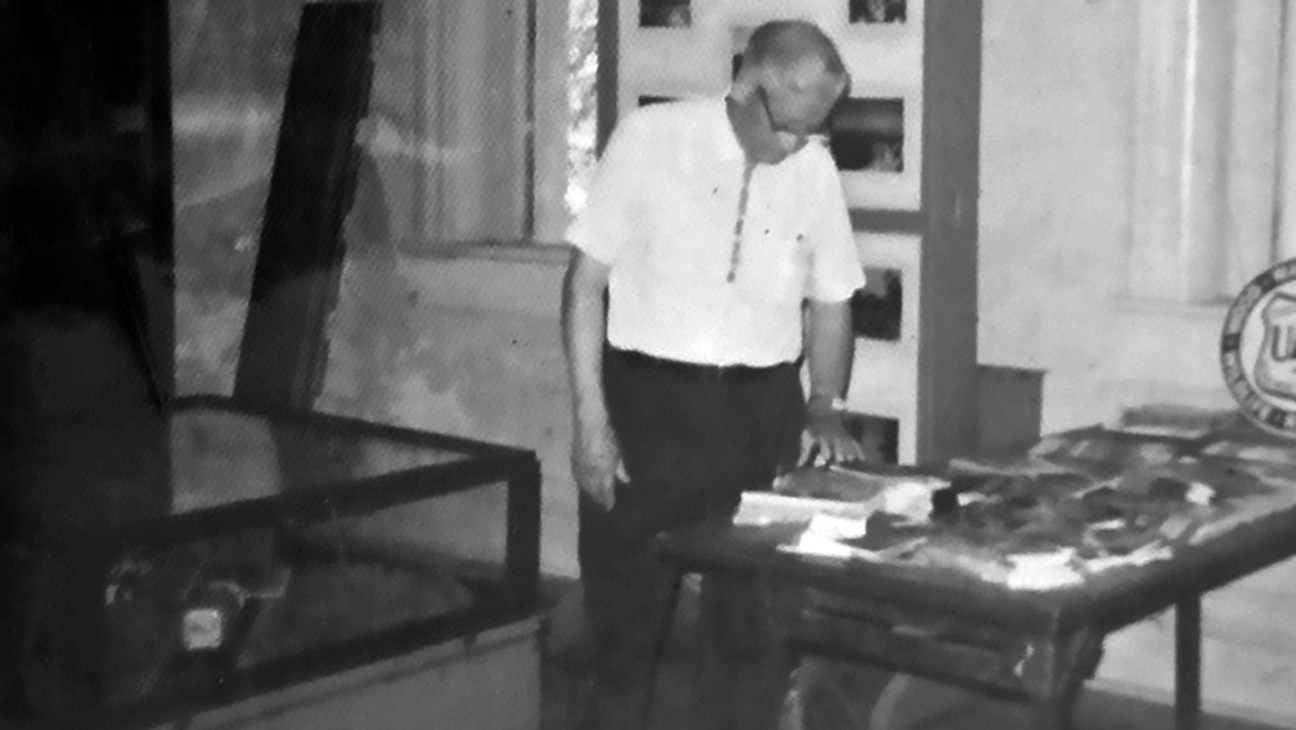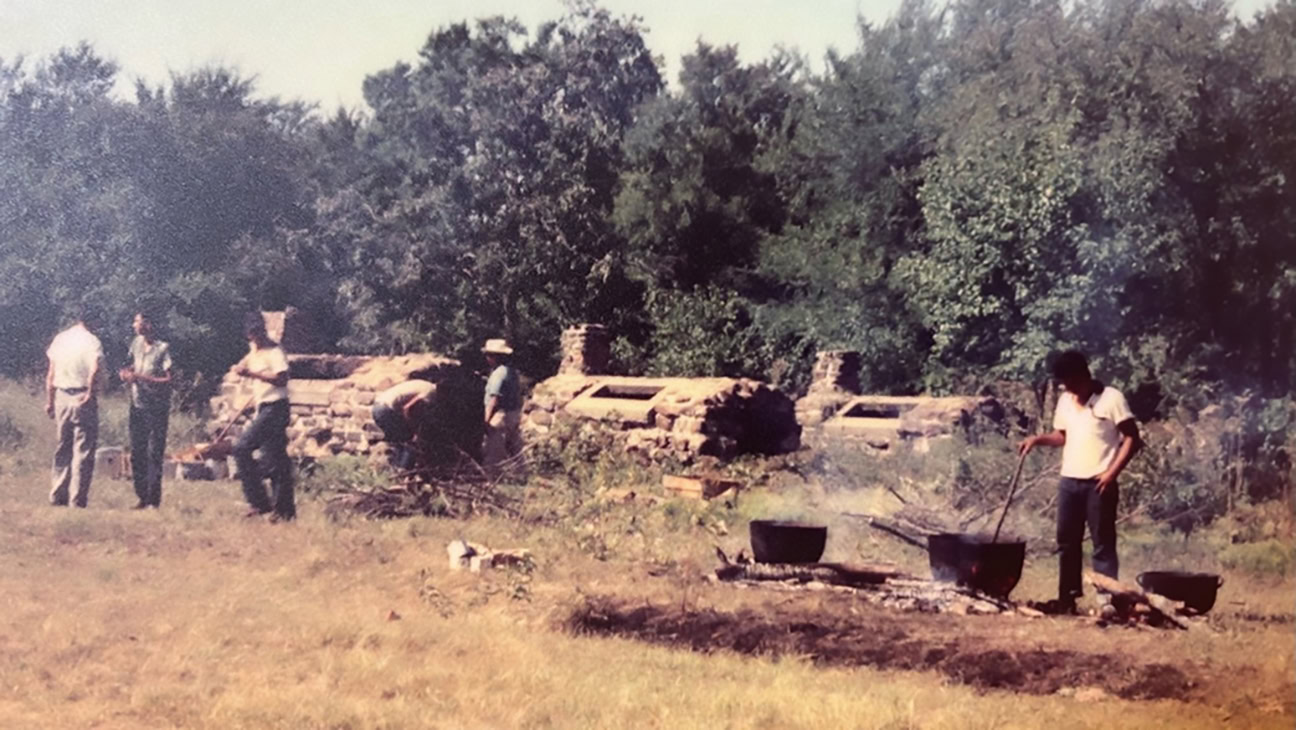
Gathering during the 1975 Labor Day Festival.
The Labor Day Festival and the Annual Iksa Meeting, Part IV
Iti FabvssaPublished August 1, 2025Iti Fabvssa is currently running a series on the 1938 reconstruction of the Choctaw Capitol Building and the yearly celebration connected to it called the “Annual Iksa Meeting.” This series examines the detailed and complex history of the Annual Iksa Meeting and its relation to today’s Labor Day Festival. This month, we will cover how Principal Chief Harry Belvin’s “Choctaw-Chickasaw Labor Day Meet” slowly evolved into our modern festival.
As discussed in the previous articles in this series, the Choctaw Capitol Building served as the anchor-point of many iterations of an annual gathering of the Choctaw people. The Annual Iksa Meeting, and later the Choctaw Indian Fair were important cultural events throughout the late-1930s to mid-1940s. It’s important to clarify that these prior events were not set to coincide with Labor Day, as our annual event does now.
During the summer of 1948, the Chiefship passed from William Durant to Harry Belvin. Famously, Chief Harry Belvin was a supporter of the Choctaw-Chickasaw Confederation, an inter-tribal alliance with a focus on discussing tribal needs outside of the official BIA structure. Although Chief Belvin had many initiatives during his first year, resuming the annual festival at the Choctaw capitol was one of the first that he acted on. He partnered with Chickasaw Governor Floyd Maytubby to reignite the annual festival as the “Choctaw-Chickasaw Labor Day Meet.”
The 1948 gathering took place on Monday, September 6. The morning of the event held a musical program that involved several prominent Choctaw vocalists, including Pete Noah, President of the Indian Singing Convention and Choctaw Code Talker Jim Edwards. As had taken place at earlier gatherings, attendees were encouraged to bring their own food and eat on the Capitol lawn when lunch was called for.

The afternoon was dedicated to addresses by Chief Belvin and W. O. Roberts, the Superintendent of the Five Civilized Tribes Agency, who would help to update attendees on the present status of tribal affairs. Initially, the annual gathering was explicitly tied to the status of the coal and asphalt lands.
During this era, the Federal Government was still invested in “closing out” tribal organizations permanently. Settling claims regarding the status of the coal and asphalt lands required input from the Choctaw and Chickasaw governments together as they both had claim to those lands through previous legal agreements. By including the Chickasaws in the annual gathering, Chief Belvin created a location and time for these vital questions impacting land sovereignty to take place in unison.
Chief Belvin publicly advertised that although the event was a success, he wished to gather more people and extend it from a single day to the entire weekend. At the next meeting, the festival started on Saturday and ended on Monday. In 1950, during the third meeting, Saturday was advertised as a recreational day, advising tribal members to bring fishing tackle to utilize the stocked ponds on the grounds. Sunday was set aside as a day with religious services, including Choctaw singing quartets, trios and solos. Monday was reserved for addresses from tribal officials and featured a barbeque lunch. At that time, the barbecue was cooked in the brick kilns that were used during the creation of the Capitol Building in 1883.
For most of the early years of the festival, festivities would occur on Sunday and Monday, with early meetings having an attendance range of a few thousand at most. At the time, transportation was a concern, so the grounds were prepared for many participants to camp out the entire duration of the festival. A two-day celebration was standard with religious services and singings occurring in both English and Choctaw. Political events and discussions generally occurred on Mondays and often featured both federal and tribal leadership discussing affairs directly with tribal members. Eventually, the combination name Choctaw-Chickasaw Labor Day Meet was shortened to only reference the Choctaw Nation. This is likely due to the Chickasaws creating their own annual Labor Day festival at Tishomingo throughout the late forties and early fifties.
As the Labor Day Festival became an important meeting place to discuss tribal business, several historic decisions were made during the festival over the years. At the 1952 Labor Day Meeting, the 11 Choctaw Area Council Presidents passed a resolution to affirm the election of Principal Chief Harry Belvin. At the meeting in 1965, the tribal organization approved the creation of the Public Housing Authority, a landmark housing assistance program that is now known as the Choctaw Nation Housing Authority. At the time, Chief Belvin stated that he believed the Choctaw Nation would be able to ignite the first tribal corporation amongst the Five Civilized Tribes.

Attendance and services slowly evolved over the next several years, with a significant event being the creation of the Choctaw Capitol Museum.
On April 8, 1970, the Choctaw Nation Historical Society was officially organized. A primary initiative of this group was to solicit and oversee the renovation of the Tuskahoma Capitol Building and convert it into a museum.
When the Museum was finally finished, it was dedicated during the 1975 Labor Day Festival, which took place over Sunday and Monday of that year.
During this Labor Day, the Tvshkahomma Capitol Museum will celebrate 50 years since this dedication.
Significantly, the 1975 Choctaw Labor Day Festival also marked the ceremonial transition from the Belvin Administration to the Gardner Administration. Chief Gardner and his successors continued to utilize the Choctaw Labor Day Festival as a meeting place for the preservation of tribal culture. Each successive Chief used the rapidly expanding tribal business as a powerhouse to further increase the impact and amenities of the Labor Day Festival.
The grounds themselves were also radically improved upon in the following decades, with the brush arbor being converted into a tabernacle and later being replaced by an amphitheater.
Many acres of the grounds have also been converted specifically for public use during events and year-round activities, such as walkways, monuments and improved sporting facilities.
Festivities were expanded from the only two days in the early years to three throughout the late 1970s, and eventually, in the 1980s, it was expanded again to open on Fridays. By the mid-1980s, advertisements boasted many of the mainstays that we all associate with the Labor Day Festival, including carnival rides, headlining singers, the annual princess pageant, inter-tribal stickball games and a powwow.